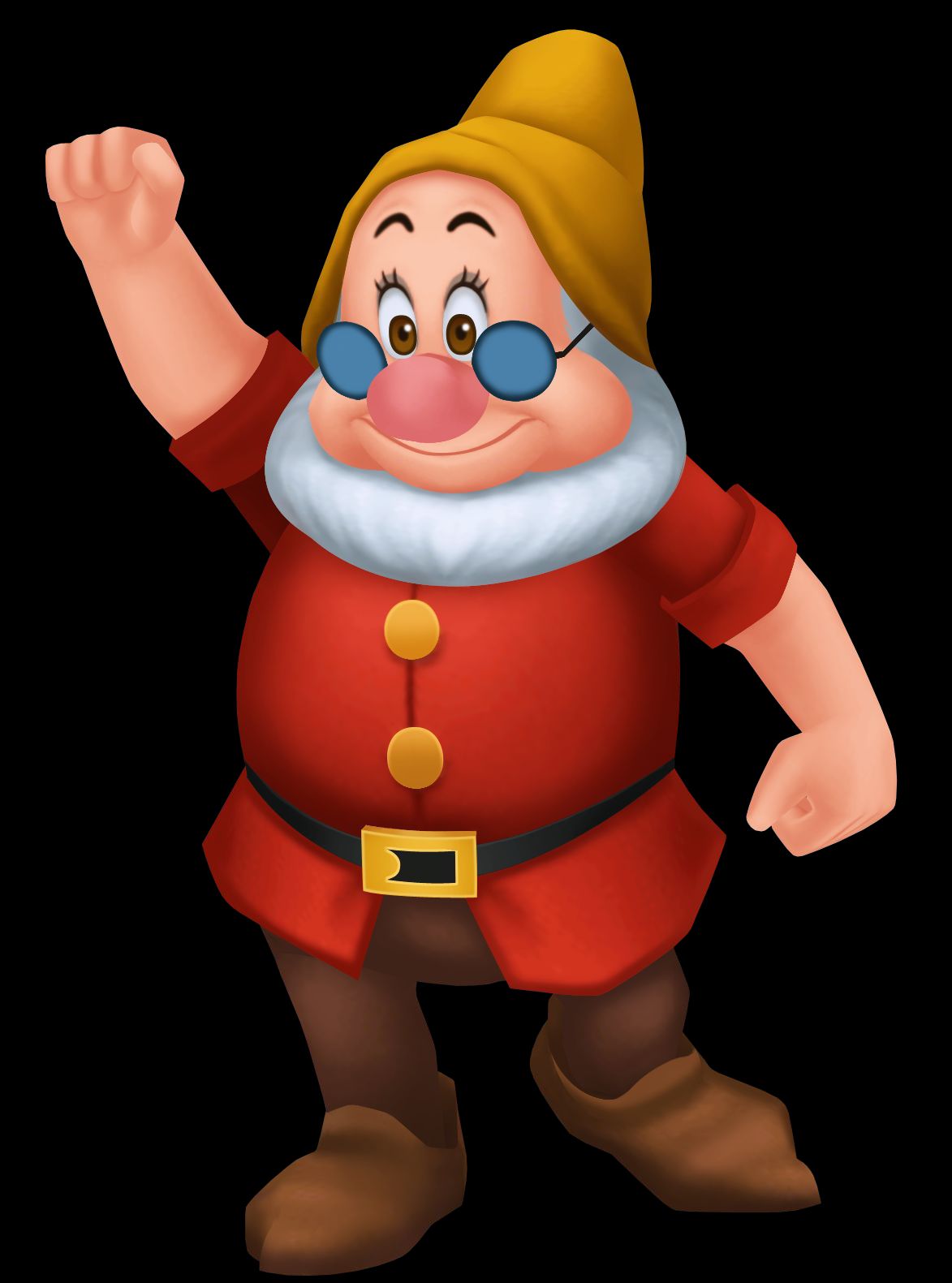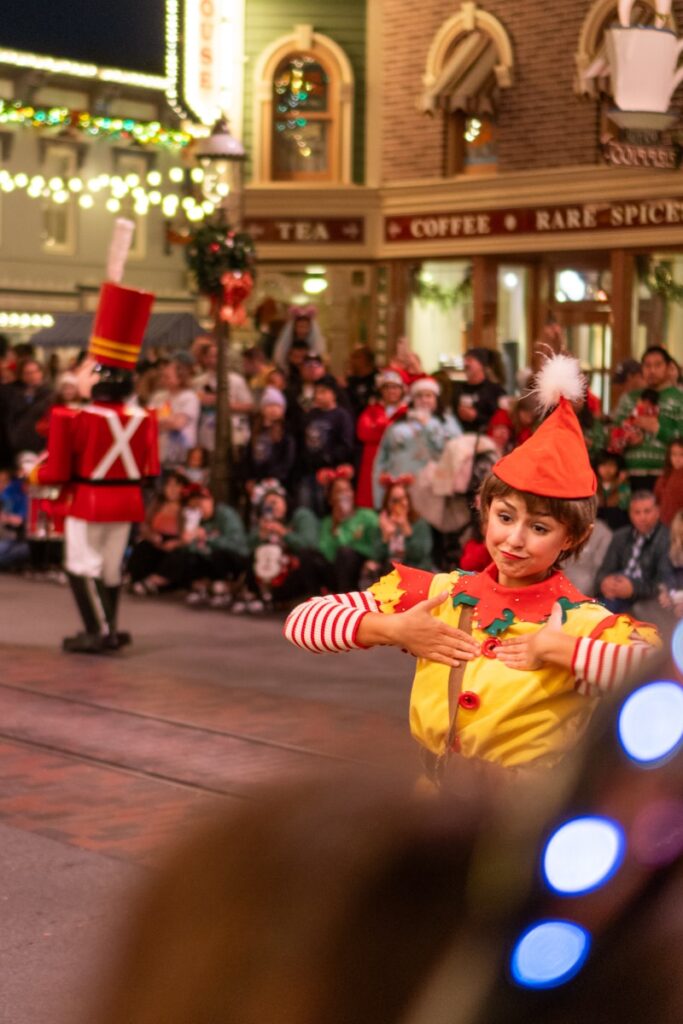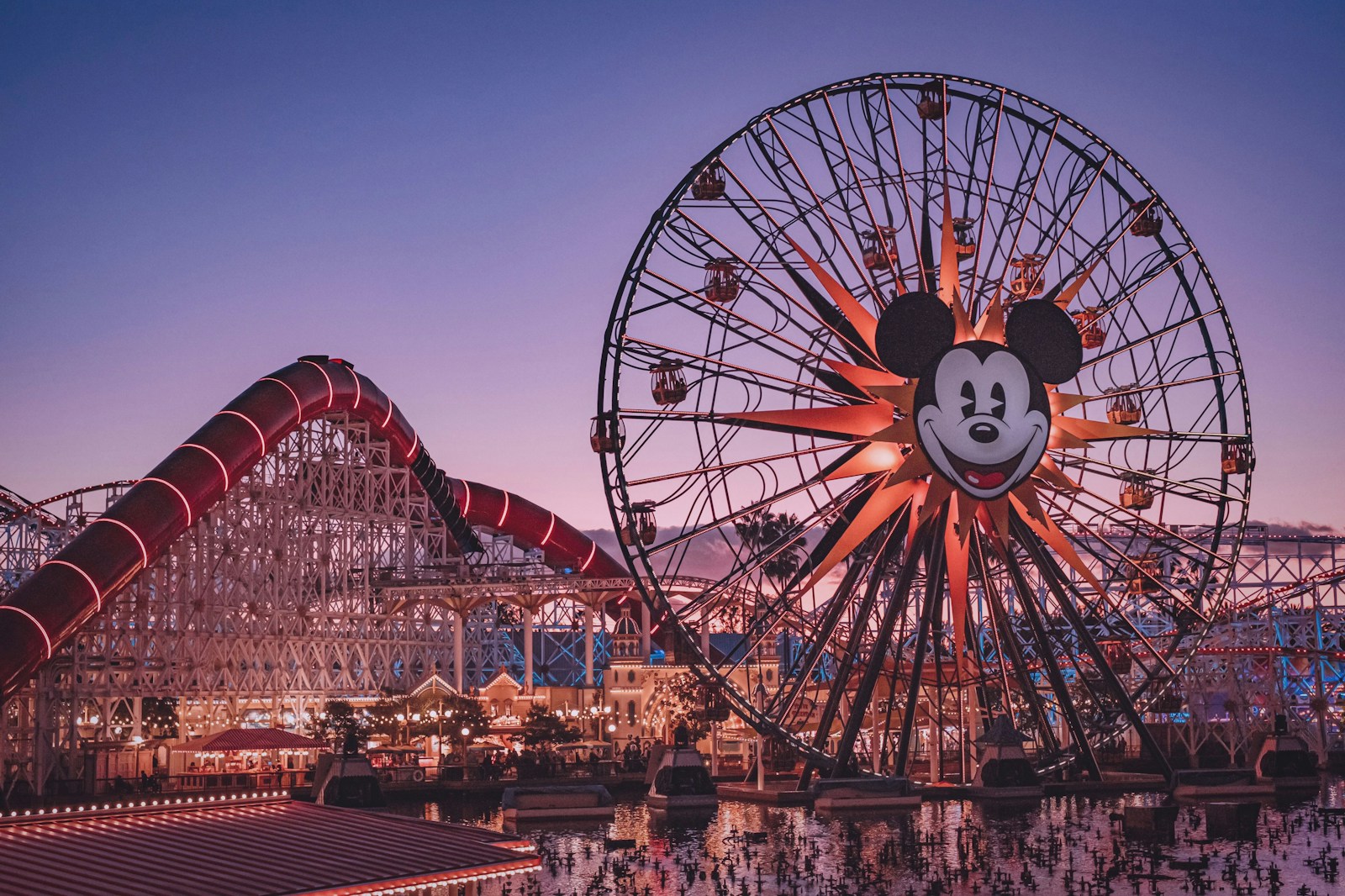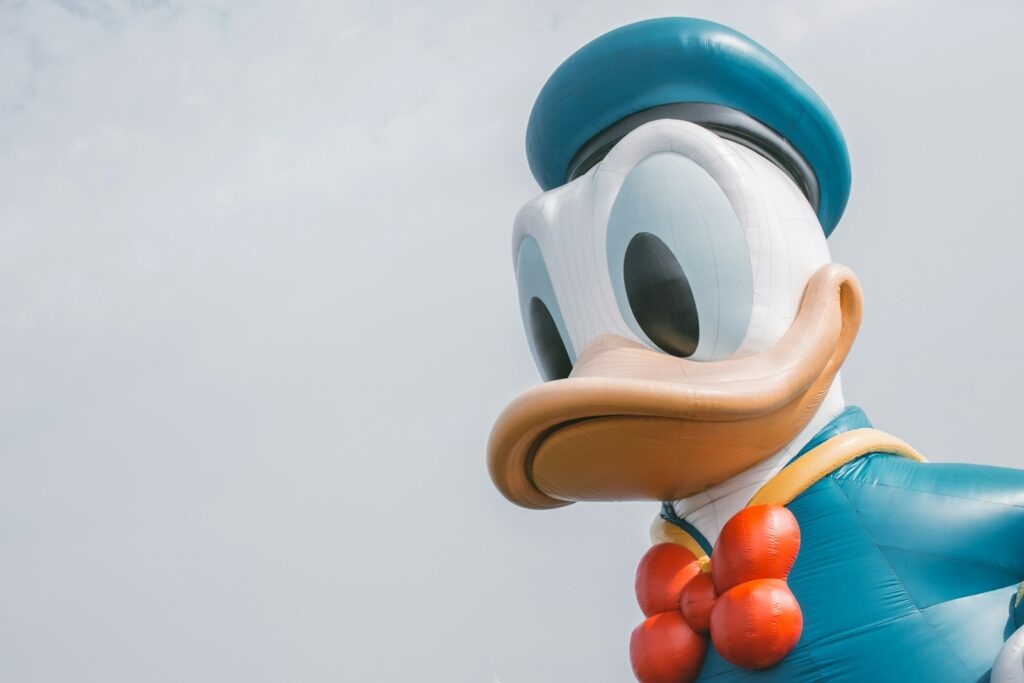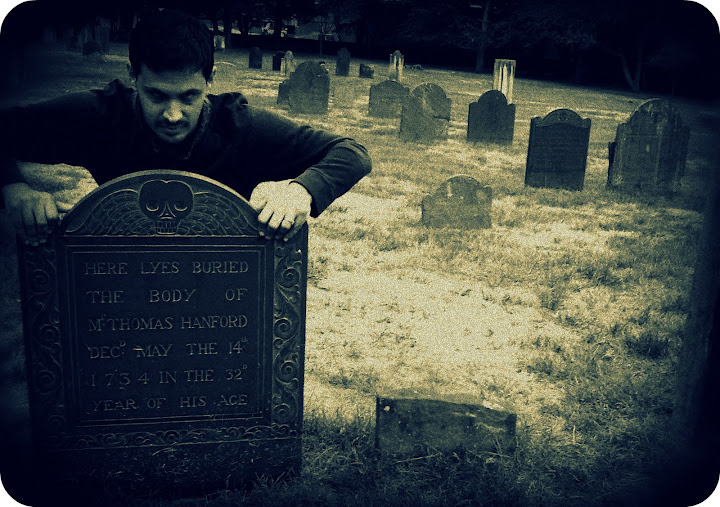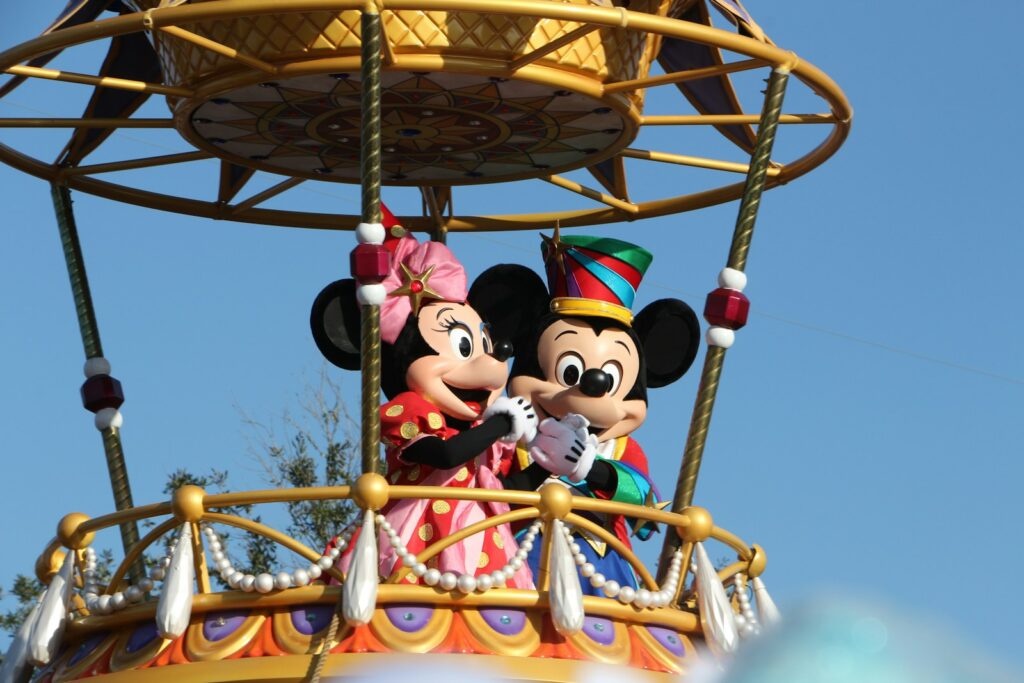
Alright, Disney fanatics, gather ’round! From the moment Walt Disney unleashed “Snow White and the Seven Dwarfs” back in 1937, his animation studio didn’t just create films; it crafted entire universes that became the bedrock of our childhoods. We’ve all hummed those iconic tunes, cheered for our favorite characters, and maybe even shed a tear or two (or a lot, let’s be real, “The Lion King” soundtrack lives rent-free in my head!). It’s a testament to the magic that so many of us have grown into proud “Disney adults,” still finding joy and wonder in every rewatch.
But here’s the kicker: while we were busy singing along with Dory or rooting for Simba, Disney’s brilliant animators and writers were having a little fun of their own. For 100 years, from the vintage vibes of “Fantasia” all the way to recent hits like “Inside Out 2,” they’ve been sprinkling hidden jokes, sly innuendos, and clever Easter eggs throughout their movies. These aren’t just subtle nods; they’re genuinely grown-up gags that sailed right over our innocent heads as kids but hit us with a delightful thud of realization as adults.
So, if you thought you knew every secret of the House of Mouse, think again! We’re about to embark on a journey through some of Disney’s most audacious and amusing adult-oriented humor. Whether you’re revisiting a cherished classic or catching something you totally missed, be warned: your childhood favorites might just get a whole new layer of hilarious, eyebrow-raising appreciation. Get ready, because you might never look at these films the same way again!
1. **Sexy spirits abound in ‘Fantasia’ (1940)**Let’s kick things off way back in Disney’s “Golden Age,” a truly fantastic period from 1937 to 1942 that gifted us films brimming with iconic imagery and unforgettable music. Among these masterpieces stands 1940’s “Fantasia,” a film unique for its complete lack of dialogue, letting the mesmerizing visuals and classical score do all the talking. But it wasn’t just its innovative format that made it so memorable; it also harbored a rather surprising adult joke that definitely pushed the boundaries for its time.
Deep within a scene that sends specters and skeletons swirling and soaring through the sky, a fascinating detail emerges if you look closely. While the male-presenting spirits and skeletons are depicted draped in cloaks, hats, and other accessories, their female-presenting counterparts are shown in an entirely different light. Their ghostly silhouettes, as the context reveals, indicated they wore nothing at all, a truly risqué inclusion for the era.
Now, by modern standards, a fleeting silhouette might not seem like much of a scandal. But imagine the shock and quiet chuckles among adult audiences in the conservative 1940s! It was undoubtedly a bold choice, a blink-and-you-miss-it moment that showcased a playful, perhaps even mischievous, side to Disney’s animators. Kids, of course, were likely too engrossed in the spooky spectacle of the dancing skeletons to notice anything amiss, simply enjoying the fantastical imagery without a second thought to ghostly wardrobes.
This early instance of adult humor perfectly illustrates Disney’s long-standing tradition of weaving in layers of meaning. “Fantasia” proved that even in an era before pop culture references and witty dialogue, the animators could still add a dash of mature spice to their cinematic stew. It’s a subtle reminder that from the very beginning, Disney understood the art of entertaining audiences on multiple levels, giving grown-ups a little something extra to appreciate.
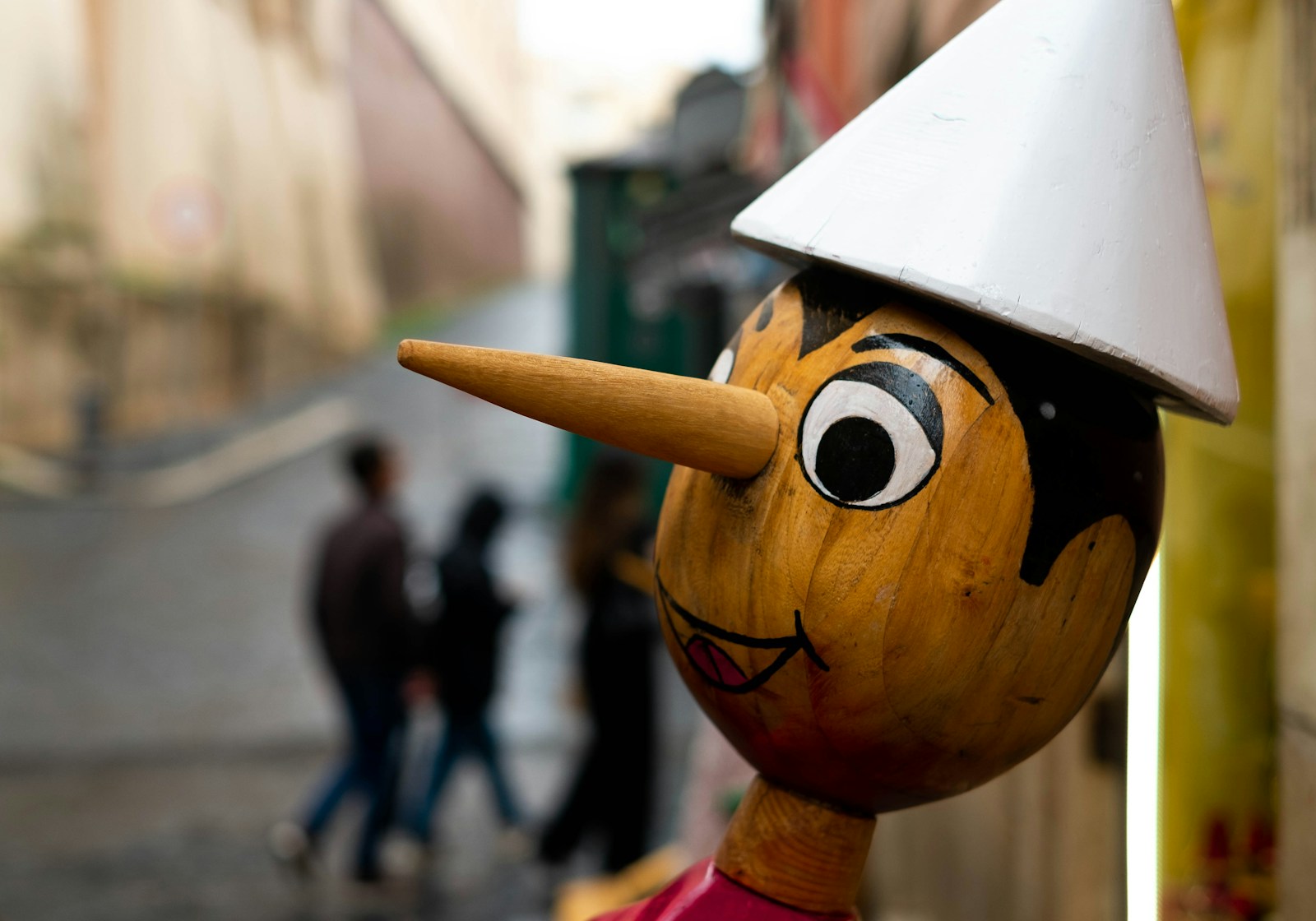
2. **The child trafficking parallels in ‘Pinocchio’ (1940)**Moving on to another foundational classic from 1940, “Pinocchio” might not have contained typical “hidden messages” in the same vein as subtle visual gags. Instead, this film presented some truly dark and dirty secrets right out in the open, secrets that only registered as sinister once you reached an age capable of understanding their true implications. For adults, the story’s undercurrents become chillingly clear, hinting at themes far more grim than a simple cautionary tale.
The most glaring example of this comes with the introduction of “The Coachman,” a character whose ominous presence and intentions take on a far darker hue through adult eyes. When he appears in the tavern, openly attempting to trade money for boys to come to his mysterious “pleasure island,” the subtext is impossible to ignore. As a child, you’d likely interpret this as a straightforward warning from your parents about the dangers of talking to strangers, a classic moral lesson wrapped in a fantastical adventure.
However, for adults, this narrative thread strongly parallels the horrifying reality of child trafficking. The casual way boys are lured, the promise of a “pleasure island” that turns them into donkeys (a metaphor for losing their innocence or becoming enslaved), and the Coachman’s sinister glee all paint a picture that is profoundly disturbing. It transforms the innocent warning for children into a chilling allegory for grown-ups, highlighting the film’s unexpected depth and its willingness to touch upon incredibly serious themes, albeit subtly for younger viewers.
This isn’t just a hidden joke; it’s a profound layer of storytelling that resonates deeply with adult fears and societal issues. “Pinocchio” serves as a powerful example of how Disney films, even in their earliest iterations, could carry a weight of meaning that transcended simple children’s entertainment, proving that the studio was capable of addressing complex human experiences in a way that truly made an impression on mature audiences.

3. **Seeing pink elephants in ‘Dumbo’ (1941)**Prepare for a moment that likely made you both laugh nervously and feel a twinge of existential dread: the “Pink Elephants on Parade” sequence from 1941’s “Dumbo.” This beloved pachyderm-packed classic is already known for tugging at heartstrings, telling the poignant tale of a sweet little elephant whose mother is incarcerated for protecting him. It’s a pretty heavy narrative for a kid’s movie already, but then comes the scene that really opens up a whole new world of adult interpretation.
After Dumbo and his pal, Timothy Q. Mouse, accidentally take a dip in water that’s been spiked with champagne (yes, you read that right, spiked champagne in a Disney movie!), they begin to hallucinate. This leads to the infamous and utterly surreal “Pink Elephants on Parade” sequence, a kaleidoscope of abstract, marching, transforming elephants that is both visually stunning and profoundly unsettling. As a child, this scene is simply a bizarre, slightly scary, and utterly captivating spectacle, a trippy dream sequence that adds a touch of fantastical madness to the film.
But for adults, this sequence carries a very specific and well-known meaning. The phrase “seeing pink elephants” is a classic idiom used to describe someone who is so intoxicated that they begin to hallucinate. Suddenly, Dumbo’s strange vision isn’t just an abstract dream; it’s a clear depiction of extreme drunkenness and its hallucinatory effects. It’s a moment of clever, dark humor that acknowledges a very adult experience without explicitly explaining it to younger viewers, who just see a parade of colorful, dancing elephants.
This sly inclusion is a brilliant example of Disney’s ability to layer meaning, offering a purely visual and entertaining segment for kids while simultaneously delivering a knowing wink to the grown-ups in the audience. It’s a moment that, once understood, makes you realize just how much goes on beneath the surface of these seemingly innocent animated tales, adding a whole new dimension to Dumbo’s emotional journey.

4. **A topless woman in ‘The Rescuers’ (1977)**Decades later, Disney proved it hadn’t entirely lost its knack for accidental (or perhaps intentional, depending on who you ask!) adult inclusions, though this one came with a much bigger scandal. While Mickey and Minnie might be the reigning rodent monarchs, 1977’s “The Rescuers” introduced us to more lovable mice, Bernard and Miss Bianca. But what truly sealed this film’s place in adult Disney lore wasn’t its charming characters, but a very risqué slip-up that remained unnoticed for years until a 1999 rerelease on VHS brought it to light.
The notorious moment occurs during a scene where Bernard and Miss Bianca are soaring through a city landscape on the back of a bird. For a brief, almost imperceptible frame, a fully topless human woman can be seen in one of the building’s windows. This wasn’t a cartoon character in silhouette; it was an actual image of a woman that had been spliced into the background, clearly not intended for a family-friendly Disney film. The discovery caused quite a stir, to say the least.
When this scandalous scene came to light, Disney wasted no time. They swiftly took action, recalling the VHS tapes in an effort to uphold their promise “to keep our promise to families that we can trust and rely on the Disney brand to provide the finest in family entertainment.” It was a significant recall, demonstrating the studio’s commitment to its family-friendly image, even if a cheeky animator had momentarily forgotten the memo.
What makes this particularly amusing for adults is the sheer audacity of it, coupled with the fact it went undetected for so long! For children, the scene would have flown by completely unnoticed, their eyes focused on the adventurous mice. This incident also comes with another fascinating tidbit: the movie was originally completed in 1962 but shelved by Walt Disney himself, who deemed the original plot (mice helping an imprisoned poet escape Cuba) “too political.” Talk about layers of hidden history in one movie!

5. **Baby Herman’s pervy moment in ‘Who Framed Roger Rabbit’ (1988)**Ah, 1988’s “Who Framed Roger Rabbit” – a cinematic marvel that brilliantly blended live-action and animation, bringing together iconic cartoons from across the spectrum. It gave us everyone from Bugs Bunny to Fred Flintstone, and yes, even the legendary Betty Boop. But this film was also a veritable treasure trove of adult jokes, so much so that we’re diving into a second one right here. And this time, it’s all about the brash, cigar-chomping character who never quite grew up: Baby Herman.
Baby Herman, the adorable baby with the voice and personality of a gruff adult man, was a character designed to shock and amuse. His persona was heavily influenced by the mafia-goon trope, making him rude, foul-mouthed, and notably lacking in concern for asking for consent. It was this audacious characterization that led to one of the movie’s most talked-about, and frankly, eyebrow-raising, adult moments that somehow slipped past the censors for a PG rating.
In a scene that’s now etched in the minds of many adults, Baby Herman walks under a woman’s skirt. As he does so, his finger flips up in a gesture that leaves very little to the imagination. The woman yelps in surprise, and Herman’s cheeky, unapologetic response? “‘Scuse me, toots.” It’s a moment that’s overtly pervy, ually suggestive, and utterly surprising for a movie aimed at a broad audience, even one pushing the boundaries of what was acceptable.
For kids, this was probably just another piece of slapstick comedy, a silly baby doing something goofy. They might have chuckled at the woman’s surprised yelp or Herman’s gruff voice. But for adults, the double entendre and the clear implication of the gesture are unmistakable, making it a truly audacious and memorable piece of hidden humor. It’s a testament to the film’s edgy appeal that it could pull off such a moment, leaving grown-ups wondering how it ever secured that PG rating!
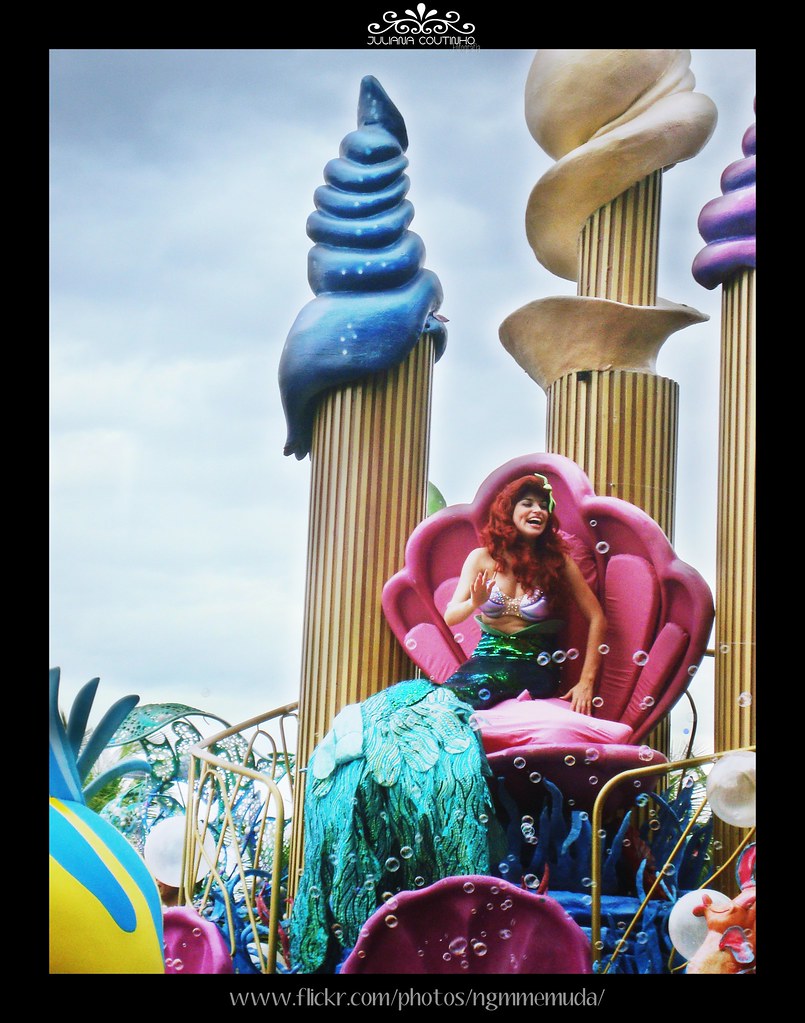
6. **Hidden phalluses in the poster for ‘The Little Mermaid’ (1989)**Get ready to have your view of a beloved Disney classic’s promotional material forever altered. 1989’s “The Little Mermaid” wasn’t just a hit; it ushered in the “Disney Renaissance,” catapulting the studio back to the top of the box office with its captivating story and unforgettable songs. However, it also sparked a bit of a controversy, not within the film itself, but on its very own movie poster – a controversy that revealed a rather suggestive hidden image that became impossible to unsee.
Fans began to immediately notice what appeared to be hidden phalluses within the golden castle that featured prominently in the movie’s poster art. The castle spires, upon closer inspection, seemed to be deliberately shaped in a way that was undeniably phallic, sparking a wave of speculation and hushed conversations among adult viewers. It was a detail that, once pointed out, couldn’t be ignored, standing out boldly in the background of an otherwise innocent and enchanting image.
The artist responsible for the poster, who, interestingly enough, didn’t actually work directly for Disney, claimed that the resemblance was purely accidental. He flatly rejected rumors that he had intentionally placed the suggestive imagery due to any disgruntled feelings towards the studio. Despite his denial, the visual ambiguity persisted, fueling the legend of the “phallic castle” and making it one of the most talked-about hidden elements in Disney’s promotional history.
For children, the poster was simply a magical gateway to Ariel’s underwater world, a beautiful depiction of her home and dreams. They saw a grand, golden castle, nothing more. But for adults, this perceived hidden image transformed a simple movie poster into a notorious piece of pop culture trivia, a lasting example of how even the marketing materials for Disney films could stir up a little grown-up giggling and debate. It truly proves that the magic of Disney often comes with unexpected layers!

7. **An arousing moment in ‘The Little Mermaid’ (1989)**And if the poster for “The Little Mermaid” wasn’t enough to get grown-ups talking, the film itself delivered another alleged adult joke that sent ripples through the fan community, even leading to a lawsuit! This particular moment occurs during what should be a perfectly innocent (albeit emotionally charged) wedding scene, as Prince Eric is about to marry the disguised Ursula, who has shape-shifted into a beautiful woman and hypnotized him away from poor Ariel.
As the bride and groom approach the officiant to exchange their vows, a fan theory quickly gained traction, pointing out a rather conspicuous detail. According to this widely circulated theory, a noticeable bulge appears in the priest’s pants at a very specific, suggestive moment, implying that he was perhaps “too happy” to be officiating the nuptials. It’s a subtle visual gag, easy to miss if you’re not looking, but once you’re aware of it, it becomes almost impossible not to spot on subsequent viewings.
This particular inclusion was so noticeable and controversial that someone even took legal action, filing a lawsuit against Disney over the alleged phallic imagery. While the lawsuit was eventually dropped, the fact that it even reached that stage highlights the impact this fleeting image had on adult audiences. It speaks volumes about the perceived boldness of the joke and how seriously some viewers took the implications of such content in a children’s film. It’s truly a testament to how Disney could ignite a conversation!
For younger viewers, the wedding scene remains a moment of dramatic tension, with Ariel desperately trying to stop the marriage and the fate of her love hanging in the balance. They’re focused on the romance and the impending disaster, completely oblivious to any suggestive details concerning the priest. This hidden joke, much like others we’ve discussed, perfectly encapsulates Disney’s masterful balance of catering to its primary young audience while simultaneously offering a cheeky, adult-oriented wink to the grown-ups who are often watching right alongside them. It’s a truly memorable moment that adds a layer of unexpected humor to a classic tale.
Alright, if you thought the ’80s were wild, buckle up! As we cruise into the mid-90s and beyond, Disney and Pixar really started leaning into the clever dialogue, visual puns, and pop culture references that sailed straight over our innocent heads as kids. Get ready to uncover even more hidden gems that prove Disney movies are truly a gift that keeps on giving to adults.
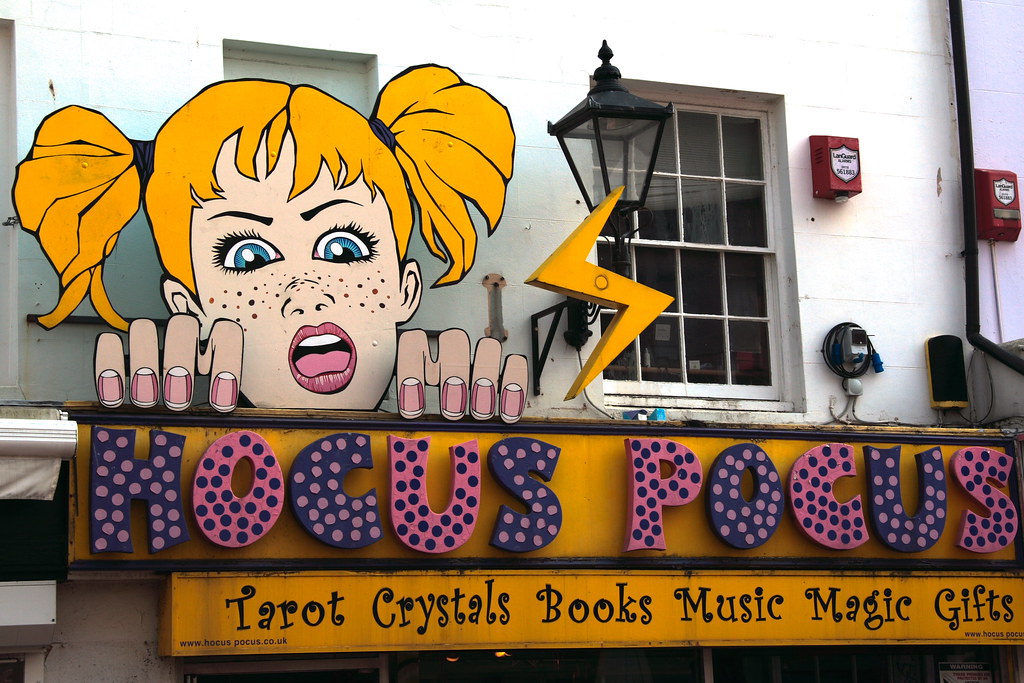
8. **Making babies in ‘Hocus Pocus’ (1993)**Switching gears to a live-action Halloween classic, “Hocus Pocus” has become a beloved spooky season staple. We all adore the mischievous Sanderson sisters, played by the iconic Bette Midler, Sarah Jessica Parker, and Kathy Najimy, as they desperately try to reclaim their youth. Their quest for eternal beauty, however, leads to a genuinely hilarious — and very adult — misunderstanding with a bus driver.
Picture this: the sisters are trying to hitch a ride, and in their antiquated way, they declare, “We desire children.” Now, to any grown-up with even a flicker of a mischievous mind, this phrase immediately screams double-entendre! But the bus driver’s response really seals the deal, pushing this moment firmly into “adult joke” territory.
He coolly replies, “Well, it could take me a couple of tries, but I don’t think that’d be a problem. Hop on up.” And if that wasn’t enough, the very next shot shows Sarah Jessica Parker’s character, Sarah, sitting on his lap, literally bouncing over speed bumps. It’s an incredibly cheeky visual gag that, while utterly innocent to a child, makes every adult in the room snicker. This one proves Disney was really flexing its humor muscles in the live-action realm!

9. **A lion nose or a thong in the poster for ‘The Lion King’ (1994)**The mid-’90s were Disney’s golden era, a true renaissance for the animation studio, and “The Lion King” in 1994 was absolutely at the peak of that wave. Anticipation for this film was through the roof, and everything about its promotion, including the posters, was meticulously crafted. But one particular poster for the film ended up sparking a wildly speculative conversation among adult fans.
Many eagle-eyed viewers, or perhaps those with a particularly active imagination, believed they spotted something rather suggestive hidden in the promotional art. The swirling lines and shadows that formed Mufasa’s majestic nose on one of the movie posters allegedly contained the sneaky silhouette of a woman’s backside. Once it was pointed out, it became one of those things that was hard to unsee!
Now, this particular “hidden joke” definitely feels like a bit of a stretch, and it was most likely an entirely unintentional optical illusion. However, the rumor certainly made its rounds, becoming a fun piece of pop culture trivia for adults. Kids, of course, just saw a powerful lion, completely oblivious to any perceived hidden thongs, perfectly illustrating how Disney could spark different reactions across age groups.
10. **What’s written in the stars in ‘The Lion King’ (1994)**”The Lion King” truly delivers on the adult humor front, not just once, but twice on our list! Beyond the controversial poster, another moment in the film itself ignited a huge debate among grown-up viewers. It occurs during a particularly poignant scene where Simba, Timon, and Pumbaa are stargazing, a classic childhood activity that takes a very adult turn.
As Simba, feeling overwhelmed, collapses into the grass, pollen from nearby flowers floats up into the night sky. In the original VHS release of the film, legend has it that these airborne particles briefly appeared to spell out the word “” among the stars. This fleeting image sparked a huge uproar and countless discussions among parents and fans, leading to the scene being cut short in subsequent rereleases.
However, an animator who actually worked on the film, Tom Sito, eventually set the record straight, clarifying that the letters were intended to spell “SFX,” standing for “special effects.” Despite this official debunking, the ” in the stars” myth remains a notorious piece of Disney lore, a testament to how eager adults were to find hidden meanings. It’s a fantastic example of a moment that either went over kids’ heads or was interpreted innocently, while adults were busy deciphering supposed clandestine messages!
Read more about: Beyond the Limelight: 15 Celebrities Who Bravely Served in the Vietnam War

11. **A true horror in ‘Toy Story’ (1995)**Then came Pixar, Disney’s groundbreaking computer animation branch, bursting onto the scene with 1995’s “Toy Story.” This film was an instant classic, not just for its revolutionary animation, but also for its witty humor and numerous Easter eggs clearly targeted at adults. It was a masterclass in layered storytelling, offering something for everyone.
One particularly chilling, yet brilliantly subtle, adult joke occurs when the gang of toys attempts to rescue their friend from the truly terrifying neighbor kid, Sid. As they face the “horrors” of Sid’s room, a keen-eyed adult viewer might notice a very specific detail that elevates the suspense. The pattern on Sid’s carpet is none other than the iconic, geometric design from the Overlook Hotel in Stanley Kubrick’s horror masterpiece, “The Shining.”
This visual nod is pure genius for grown-ups who instantly recognize the reference, adding an unexpected layer of “true horror” to Sid’s already menacing room. Children, on the other hand, are simply engrossed in the toys’ perilous adventure, completely oblivious to the sophisticated horror homage. It’s a perfect example of Pixar’s cleverness in sprinkling in these knowing winks to the adult audience without disrupting the magic for the kids.
Read more about: Beyond the Limelight: 15 Celebrities Who Bravely Served in the Vietnam War
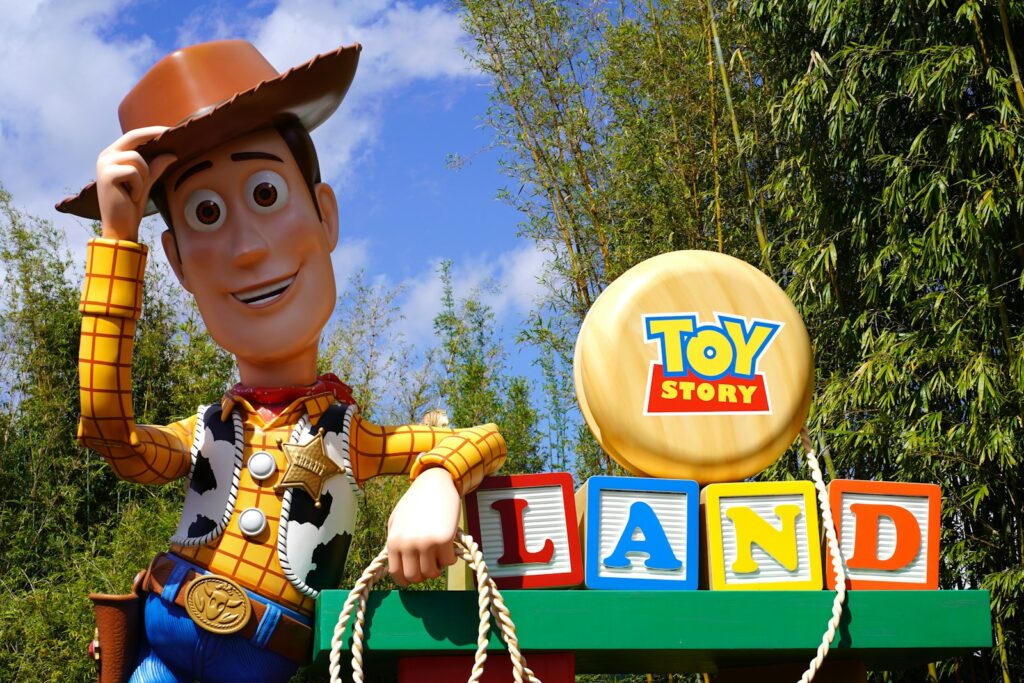
12. **The narcissism reference in ‘Hercules’ (1997)**”Hercules” from 1997 was another Disney smash, celebrated for its incredible cast and an even more amazing soundtrack that still lives rent-free in our heads. This mythology-based film, steeped in ancient Greek lore, gave the writers plenty of opportunities for some truly clever, adult-oriented humor that flew right by younger viewers. One such moment involves the gossipy messenger of the gods, Hermes.
During a grand party scene where all the gods are mingling and making merry, Hermes delivers a cuttingly witty line that perfectly blends ancient myth with mature understanding. He quips, “I haven’t seen this much love in a room since Narcissus discovered himself.” As he says this, the camera perfectly cuts to Narcissus gazing adoringly at his own reflection in a mirror.
For adults, the joke lands perfectly, understanding the reference to the Greek myth of Narcissus, who fell in love with his own image, and the modern psychological concept of narcissism. Kids, however, would likely just see a funny-looking guy staring at himself, completely missing the profound and rather hilarious implication. It’s a brilliant way Disney infused intellectual humor into a children’s movie.
13. **The Oedipal joke in ‘Hercules’ (1997)**And “Hercules” wasn’t done yet with its mythological deep dives for the grown-ups! Later in the film, during a romantic stroll between Hercules and the delightfully sarcastic Megara, our hero takes the opportunity to drop another ancient Greek reference that’s definitely not for the kiddos. Their date concludes with a heartwarming moment under the stars, but Hercules’ final thought is surprisingly dark.
He casually mentions, “And that play, that Oedipus thing? Man, I thought I had problems,” delivering the line with a chuckle. For children, the name “Oedipus” probably sounds like just another one of the many fantastical Greek gods or heroes mentioned throughout the film, a simple, unfamiliar name. They’re focused on the romance and the sparkling stars, not ancient tragedies.
But for every adult in the audience, the reference to Oedipus—the tragic figure who famously killed his father and married his mother—hits with a knowing, darkly humorous punch. Suddenly, Hercules’ “problems” seem rather quaint in comparison! This clever one-liner beautifully showcases how Disney could weave in mature, literary jokes, offering a rich, multi-layered viewing experience that truly appealed to everyone.
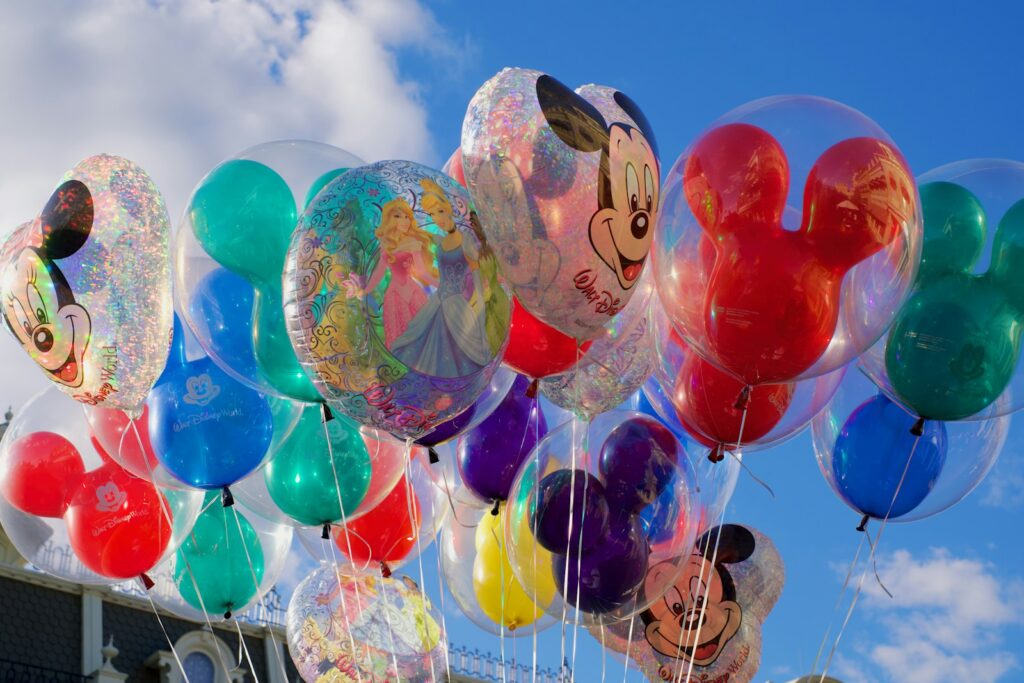
14. **Buzz’s sign of approval in ‘Toy Story 2’ (1999)**By 1999, the “Toy Story” crew was back in action with “Toy Story 2,” and this sequel introduced us to some fantastic new characters, including the spirited cowgirl Jessie. Her arrival seemed to catch the attention of a certain space ranger in a very particular, and hilariously adult, way. It’s a moment so subtle yet so unmistakable once you know what to look for!
During a scene where Jessie is enthusiastically showing off her impressive action skills and daring stunts, Buzz Lightyear, ever the stoic hero, watches on. And as he observes her incredible prowess, a very sneaky and subtle visual gag occurs: both of his famous wings simultaneously pop out from his back. It’s a blink-and-you-miss-it moment, but for adults, the implication is clear as day.
This “wing-popping” action is widely understood as Buzz’s very unique, animated sign of approval—a playful, almost physiological, reaction to Jessie’s captivating performance. While kids simply enjoy the cool action figure deploying his wings, adults instantly recognize the cheeky, suggestive humor, nodding along with a knowing smile. It’s a truly ingenious and memorable way Disney and Pixar slipped in a little grown-up giggle.
And there you have it, folks! From ghostly s to Oedipal jokes, and from “making babies” to Buzz’s enthusiastic wings, Disney’s animators and writers have been sneaking in adult-oriented humor for a century. It’s these brilliantly layered jokes and Easter eggs that transform our beloved childhood favorites into endlessly rewatchable treasures for adults. So next time you settle in for a Disney movie marathon, keep those grown-up eyes peeled – you never know what hilarious secret you might uncover! It’s clear that the magic of Disney isn’t just for kids; it’s a wonderfully witty world crafted for all of us, no matter our age.

